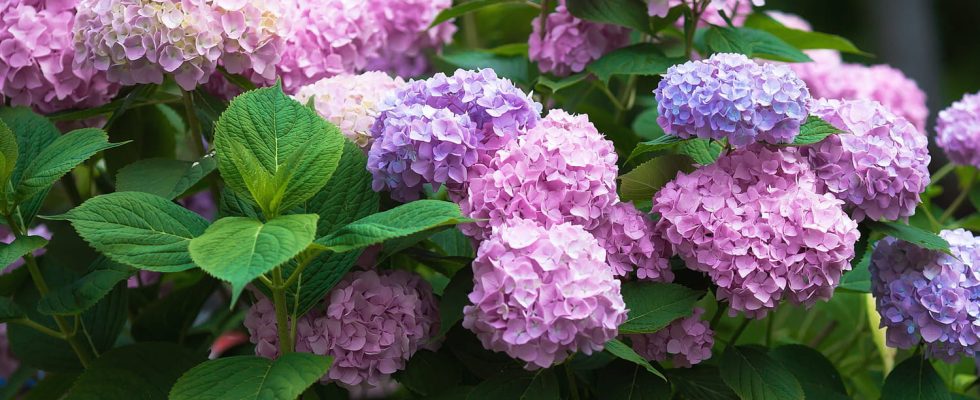So that your hydrangea produces beautiful flowers in fine weather, don’t forget this essential gesture at the end of February. It will facilitate its growth and flowering.
There is nothing more beautiful in a summer garden than hydrangeas in bloom. These plants are popular with gardeners because not only do they produce lots of incredibly colorful flowers, but they are also perennials, meaning they will grow back every year once planted. If hydrangeas require little maintenance, action is essential now to avoid the risk of having smaller flowers, or even bare shrubs.
February is a time when most gardeners may be concerned, as frost damage can easily damage flowers as they emerge from dormancy in late winter. Now is the best time to start checking your hydrangeas and pruning them properly to ensure they bloom once the weather warms as spring arrives
Hydrangeas should be pruned in late February or early March at the latest, before the plant fully emerges from dormancy to reduce stress on the flower from winter frosts and to make it easier to assess its health by inspecting the plants. bare branches. Pruning is also done to ensure that hydrangeas do not expend energy on dead or damaged branches, but instead reserve their energy on new growth so that they bloom beautifully in summer.
You still need to know how to prune your hydrangea. Lee Burkhill, an award-winning gardener shared on his website Garden Ninja, that knowing how to prune the plant is essential to ensure “beautiful flowers.” He explains that he prunes his at the end of February. This operation is quite quick, “don’t let the size discourage you, fearing you will damage your hydrangea” he adds.
According to Lee, pruning hydrangeas “couldn’t be simpler” because all you need is a pair of sharp, clean pruning shears. Here’s how to do it:
- To start, remove the dried brown seed heads that come from last year’s growth and simply cut off the new set of green buds.
Now that you have a clearer view of the hydrangea, remove about a quarter of the oldest stems and return them to the ground with a clean cut. This is done to encourage fresh flowers and ensure you quickly get larger, more vibrant petals once the hydrangea flowering season begins.
Next, check the center of the hydrangea, if the stems appear crowded or overgrown. Simply thin out and remove any tangled or crossing branches, as they damage the plant and make it more difficult to maintain over time.
Cut the remaining stems above a bud to 1/3 of the height or at a main node to prevent the hydrangeas from becoming too heavy once they begin to bloom.
The final step is to inspect your hydrangea and make sure it looks healthy and open with plenty of air circulation.
